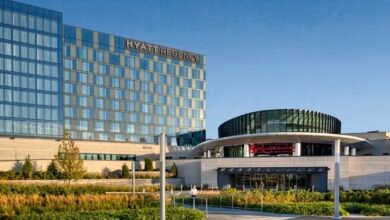Op-Ed | When it comes to environmental impact, one NYC gaming bid stands above the rest


In 2013, New York voters approved a constitutional amendment allowing casino gaming in the state, and the state is now in the final stages of awarding three casino licenses for the downstate region. While I’m neither a casino advocate nor opponent, I do care deeply about how these developments will impact our environment and communities. With final decisions expected by the end of 2025, we have an opportunity – and responsibility – to ensure these projects minimize their environmental footprint.
For over three decades, the Lower East Side Ecology Center has worked at the grassroots level to build environmental resilience throughout New York City. From our community composting programs that have diverted millions of pounds of organic waste from landfills to our environmental justice advocacy, we have pioneered community-based models in urban sustainability across our city. We also understand that true sustainability requires both community engagement and smart policy choices. This experience has taught us to evaluate every major development through an environmental lens.
When we apply that lens to the current proposals for casinos across New York City, one approach stands out above the others. Nearly every project would require demolishing existing buildings to construct new ones – a process that generates enormous amounts of construction waste and debris while disrupting established ecosystems. In fact, according to the Environmental Protection Agency, more than 90% of all construction debris is produced by the demolition of existing buildings.
The proposed partnership between SL Green Realty, Caesars Entertainment, and Roc Nation for Times Square takes a different approach entirely. Rather than tearing down and starting from scratch, Caesars Palace Times Square would adaptively reuse an existing building, delivering all the economic benefits of a major entertainment destination while avoiding the environmental costs that typically come with such projects.
Put differently, Caesars Palace Times Square will recycle an existing office building in the heart of Times Square, breathing new life into it without the need to create new concrete and steel – the largest contributor of greenhouse gas emissions in the construction cycle. By recycling a building, this approach can save up to 40% of emissions that will be generated by other gaming projects that propose to build new buildings.
Construction aside, the adapted building would sit atop the busiest transit hub in New York City, with access to nearly every major subway line and close connections to regional trains and buses – supporting the 75% of customers who are expected to use mass transit. For the only 6% of customers who plan to drive to park, the project will utilize a dedicated garage located outside of the bowtie to accommodate 100% of the demand and remove 336 of the existing parking spaces at 1515 Broadway. The remaining 19% of Caesars Palace Times Square customers who plan to use ride-shares and taxis will receive Caesars Rewards for actively participating in the drop-off and pick up zones located outside of Times Square’s bowtie. All of this works together to promote sustainable modes of transportation rather than clogging Times Square with more vehicular congestion and carbon emissions.
And let’s not forget that the benefits of an existing building aren’t just environmental. In a city as dense as New York, land itself is precious. Adaptively reusing an existing building in a commercial district avoids displacing any opportunities for affordable housing or open spaces like other projects would.
But beyond the physical entertainment center, this project is partnering with the Lower East Side Ecology Center itself to invest directly in the surrounding community. With their support, we’ll be able to expand our community composting network to reduce reliance on landfills and help build healthier soils. They have also committed to scaling up our citywide tree planting and maintenance, which is critical for urban cooling, air quality, and stormwater management. And finally, we can expand our community education programs for public schools and local youth through hands-on learning opportunities, empowering the next generation of environmentally conscious leaders. Notably, all of this stable private investment makes us less reliant on unpredictable public funding cycles, giving us the ability to plan ahead, build capacity, and focus on long-term environmental impact where it matters most.
This isn’t just about one building. It’s a chance for New York to demonstrate what responsible urban development can look like in the 21st century: one without unnecessary sprawl, spiking emissions, or housing displacement. Just smart reuse and strong public infrastructure.
Times Square has always been the economic engine of New York. With the right plan, it can now be a symbol of its environmental responsibility, too.





